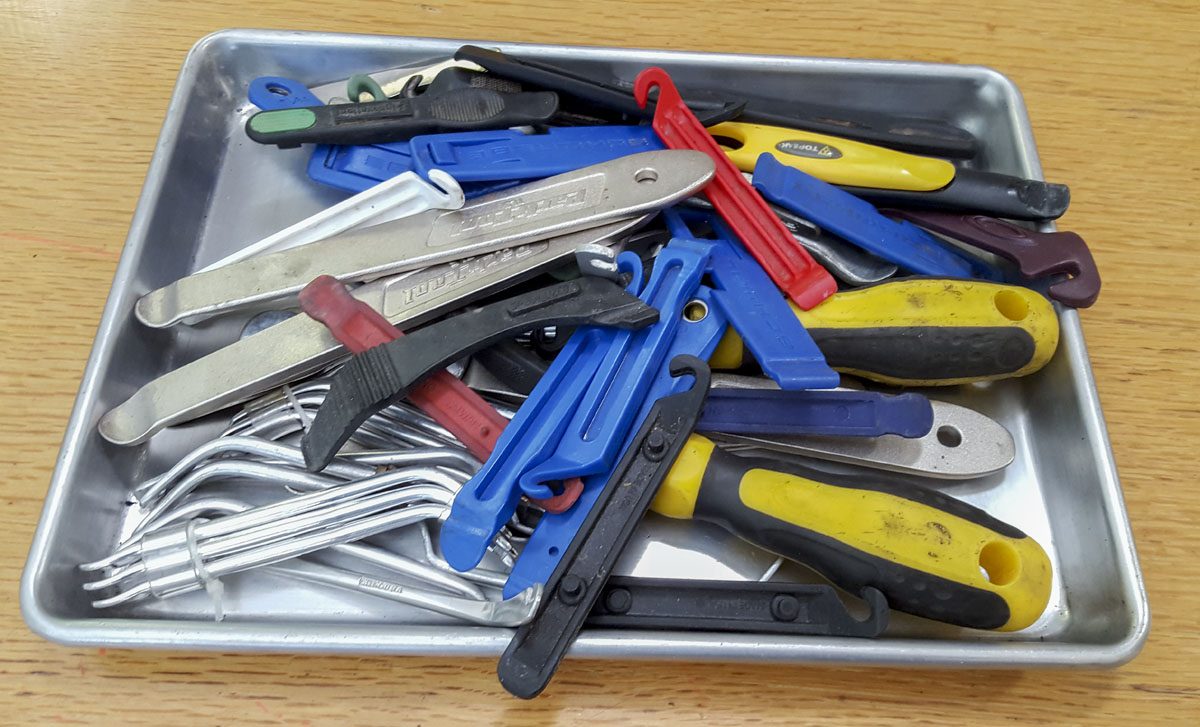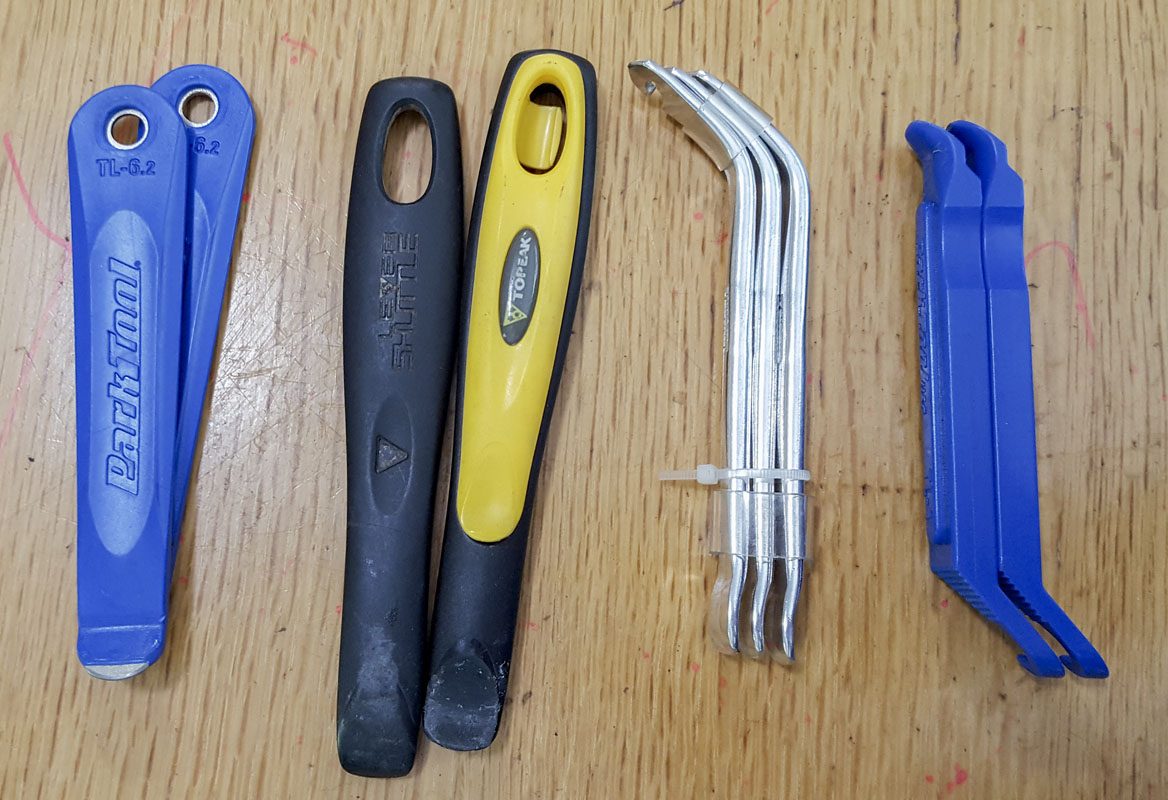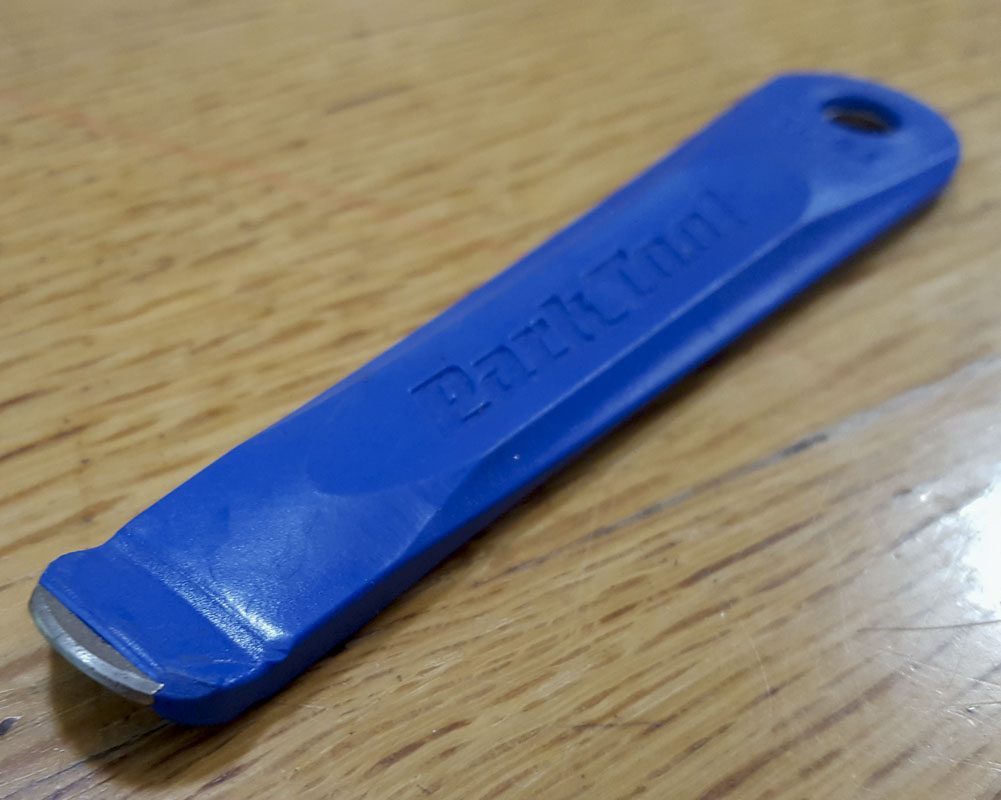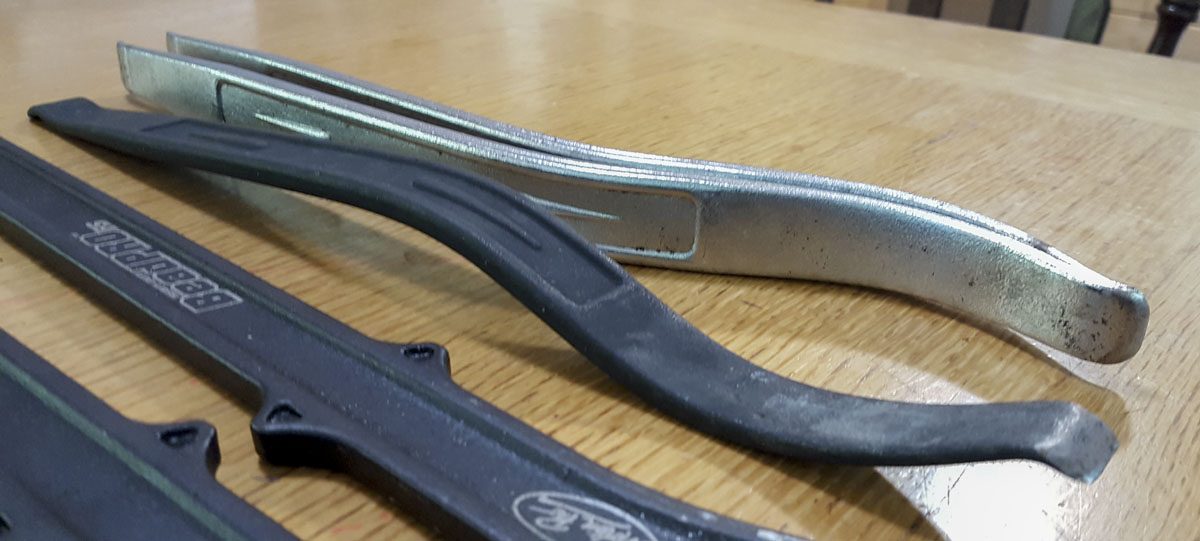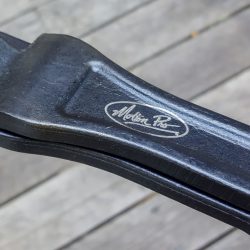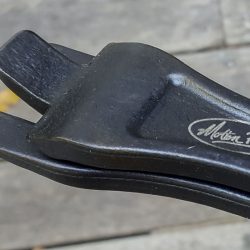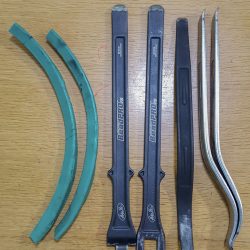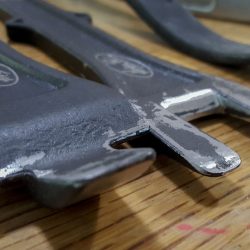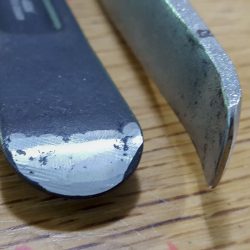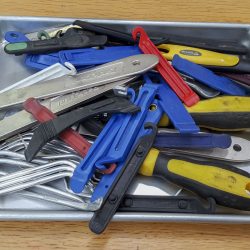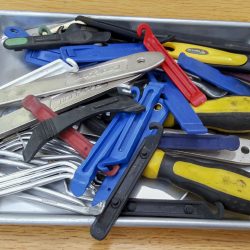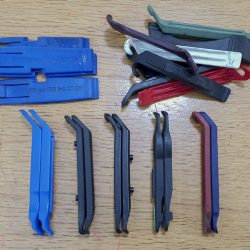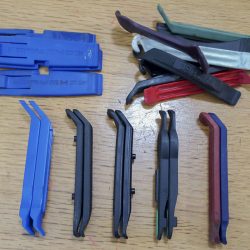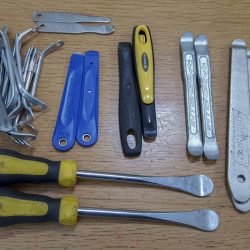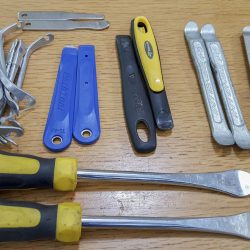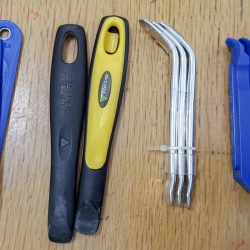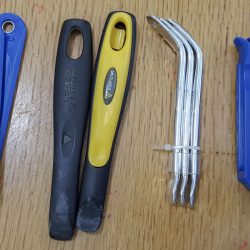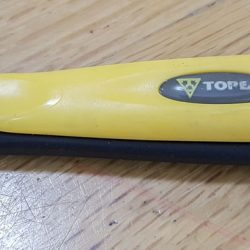Every cyclist has to to fix a flat tire. For that, there’s IRON!
Not all tire irons are the same. Most are terrible. I’ve been handling these things for a pretty long time. Every now and then you find some that just work well.
In the bicycle world, tire levers (irons or spoons) are treated as a novelty. They’re cheap plastic levers that break or aren’t designed to do real work. It’s a throw away item at the retail level. Plastic levers are prolific. Big metal levers mostly provide enough leverage to ruin tires or rims. A novice can get into a lot of trouble using this too.
This topic came up this week at my house so of course, it generates a blog post. “Never let a good crisis go to waste”
These are a few that I like, and one I don’t.
- Minora ATL lever – These are the gold standard for levers to keep in your ride bag. They are very slim and fairly strong. They get in where others don’t. They work where others fail. The only problem is that they aren’t super strong and will bend in time. It would be nice if a good titanium version was available that were thinner and stronger.
- Topeak Shuttle Lever 1.2 – These are larger tire levers that work especially well when working around CushCore or another type of supportive tire insert. It’s design is sublime for this use. If you use tire inserts, buy this lever.
- Park TL-6.2 – Steel core tire levers. They are strong and low profile and not too wide. I’d bet on these, especially for DH folk.
- Park TL-1.2 – If you are going to have a set of shitty plastic levers floating around, you might as well have these. They are fairly well designed. Nothing crazy but better than most. Still, garbage.
One tire lever in my stash is just terrible for what it was made for. The Pedros Downhill Tire Lever. It is such a bad lever for use on a bicycle tire. The head is so broad that you’re really working against yourself to use it. Why do I have them? Because they work really really well for spreading brake pads when resetting disc caliper pistons. Their broad rounded surfaces don’t damage soft friction materials and provide good leverage. They also work very good for removing fork seals. One for the race box, one for the home shop….for brakes and forks.
I talk a lot about charlatanism in the bicycle industry. I guess that spoons of a sort keep me on topic. I wouldn’t want folks to think I’m getting soft.
Since the mid-nineties, I’ve changed all of my motorcycle tires myself. It’s a terrible skill to learn as once you do you are relegated to do it for the rest of your life and it’s a shitty job. Almost all the tires I swap out are high performance sportbike tires or maxi-scooter tires. Each has it’s own challenge.
My ‘go-to’ iron for changing motorsport tires is the Motion Pro Curved 15 Inch (08-0007). There are a lot of irons that may look very similar but this one is different. Other irons are straight and cant get into where these do. The curves are very well worked out and the length is really helpful. Once you use one of these, you won’t bother with most others. Just buy three of them, pay the money. Iron is gold.
I do a bit of grinding, filing, sanding and shaping to the ends of these irons to help them work better. I smooth out the surface and round corners. That helps them not scratch surfaces easy. I also take a little thickness from them to help them squeeze into tight places. Don’t be afraid to shape these for improved performance.
The impetus for this post; I’ve just got a set of the new MotionPro BeadPro™ FS (Forged Steel) (08-0536). The bead breaking aspect of these is intriguing. Making that part of the process is crucial for anyone that doesn’t have proper mounted bead breakers set up. If they work, my life will get a lot easier. I’m going to make a final determination in a week or two when I mount a new front tire on my CTX. I’ll revise after that.


